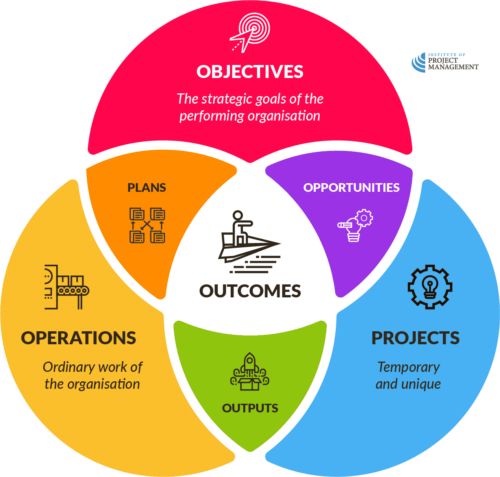Business as usual
Business as usual describes the day-to-day activities of an organization, and can be visualized as follows…
Objectives
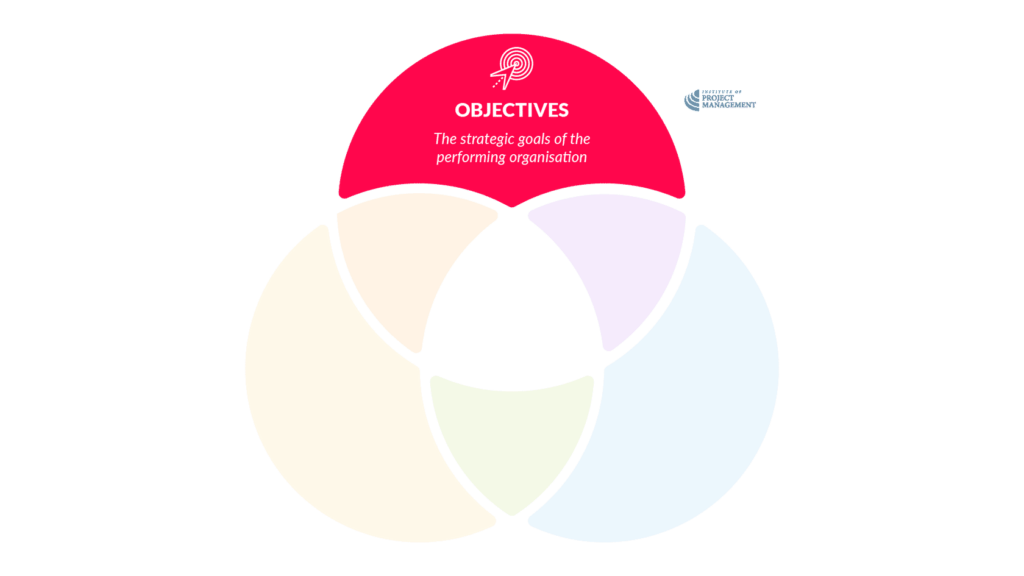
Just like the individuals who make it up, every organization has a number of objectives it hopes to achieve.
These might be as simple as making a financial return for shareholders; not-for-profit businesses might also aim to contribute to the community somehow.
An organization’s objectives can often be found in its strategic plan or inferred from what it does daily.
Objectives may also include cultural goals, such as values or behaviors that the organization aspires to.
Plans to Operations
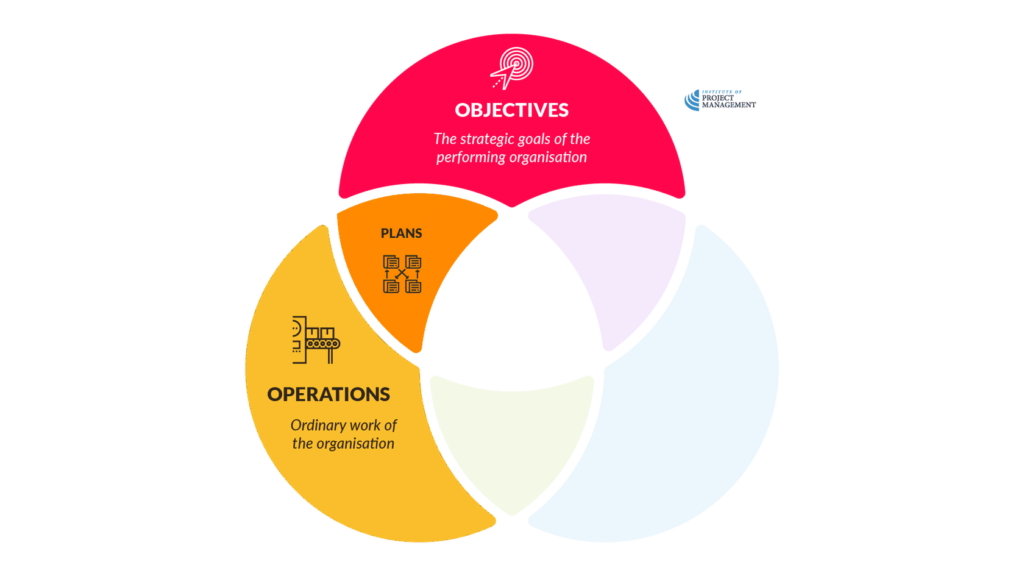
Organizations further develop specific departmental plans that convert the strategic objectives into a set of accountable actions.
These day-to-day activities are the operations of the enterprise.
This process is what we call ‘business as usual’ for organizations and should be quite familiar to you.
Outputs
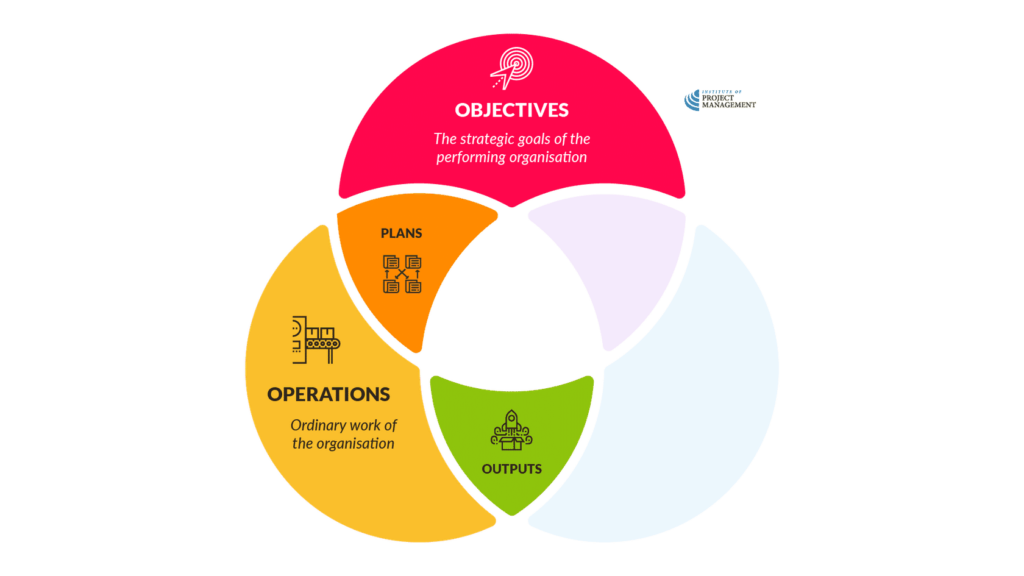
The purpose of business operations is to produce any number of defined outputs.
Outputs can include goods for sale, services for clients, or payroll for staff – pretty much anything the organization delivers on a routine, regular basis.
Outcomes
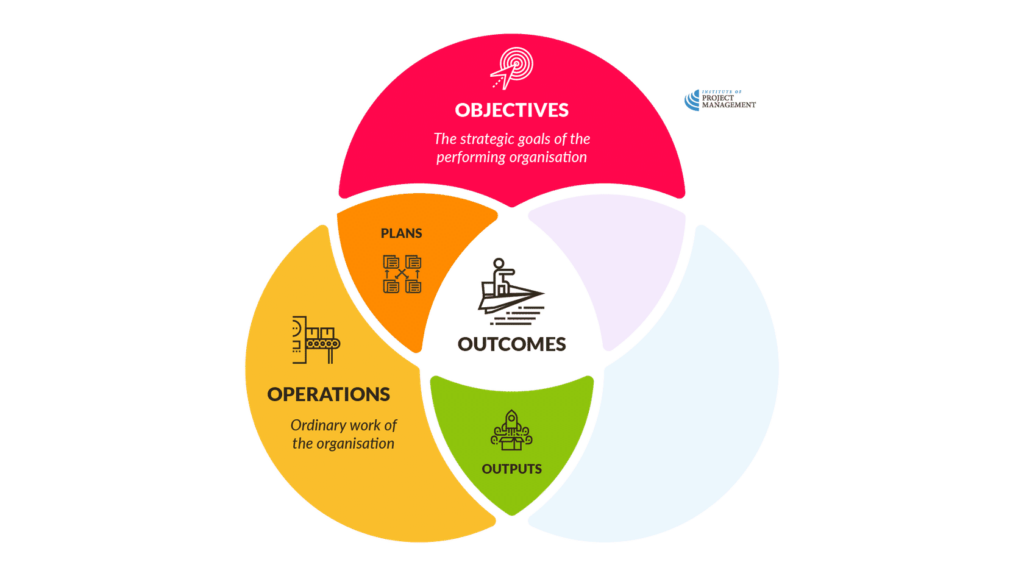
These outputs are then converted into outcomes through market-based transactions (where the outcome would be revenue) or other less tangible qualities, such as new knowledge and skills.
Outcomes will then inform the organization’s objectives or pass lessons learned back to operations to close the loop.
Projects
If projects are an organization’s ‘unusual’ business, how do they fit in?
Opportunities
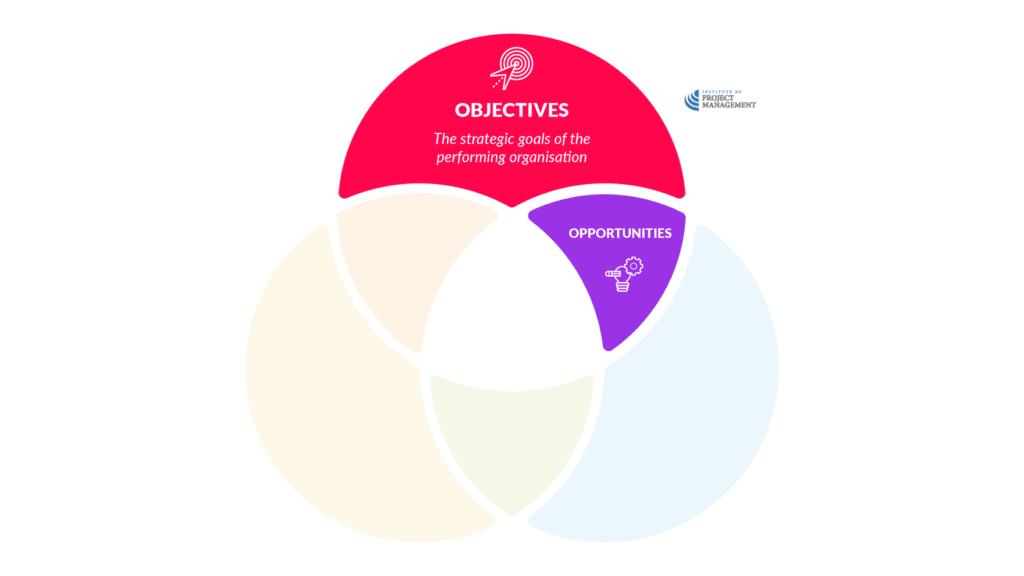
Our organizational objectives also give rise to new ideas, which we convert (through a process we will discuss later in this Module) into opportunities.
These opportunities sit outside our operational business activity and present new organizational challenges.
Projects to Outputs
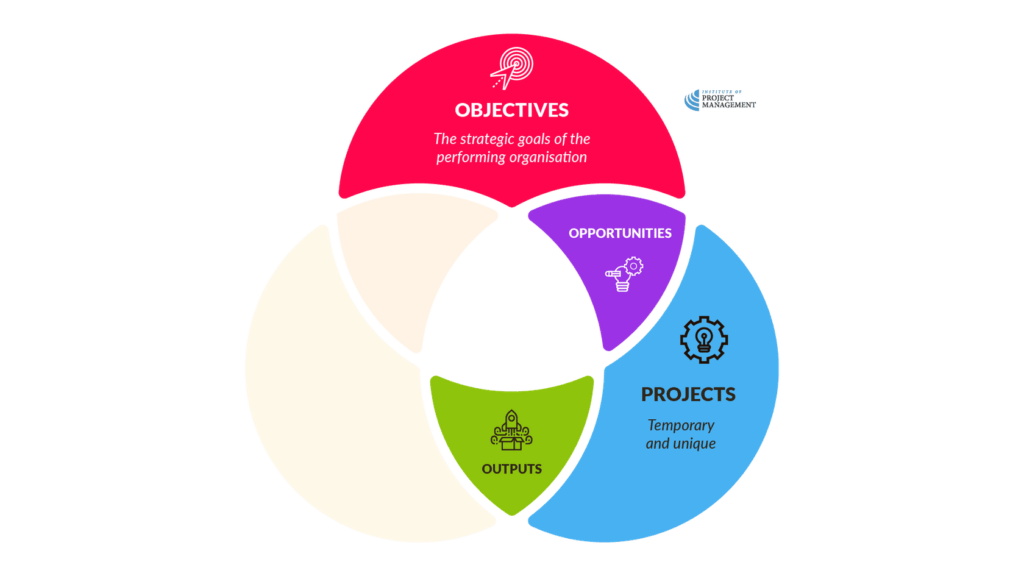
Projects are the temporary, unique activities we undertake to realize these opportunities.
As discussed in the previous topic, they also deliver outputs (products, services, and results).
Outcomes
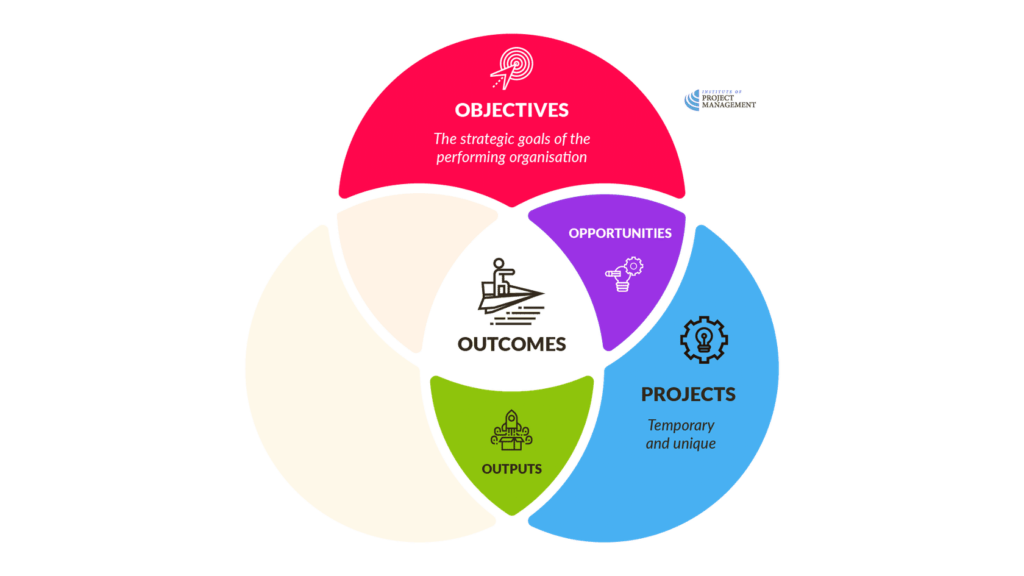
These outputs can either be released directly to the world to realize new outcomes for the organization or returned to operations to improve how we go about our business.
Bringing it all together
To give it some context, this course – this project – you are undertaking is undoubtedly linked (consciously or otherwise) to one or more of your personal and/or professional objectives.
Actually, why are you here?
If you haven’t already done so, think about and write down your personal objectives on a piece of paper and stick it by your work or learning space.
Personal objectives may include things like becoming more skilled in something or finding new employment.
You might then identify a number of opportunities that can help you realize those objectives.
At some point, you have recognized this course (subconsciously or otherwise) as an opportunity to help you meet those objectives and commenced it as a project.
Depending on your end-point, you will receive as an output a professional certification or qualification.
Importantly, though, the outcomes of your study project will be many of those things we described before – new knowledge, skills, and networks; positive changes to your attitude and behavior; and innumerable lessons learned.
All of which you should be able to translate into a more productive and profitable career!
